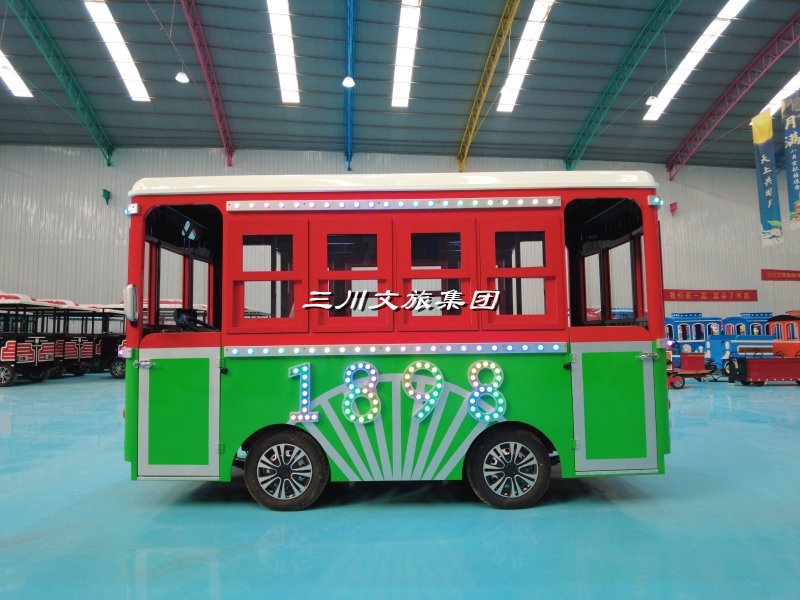Sightseeing train maintenance
来源: 小火车厂家 浏览: 发布日期:2020-09-15
At present, many scenic spots purchase small sightseeing trains, but do they maintain and maintain the small sightseeing trains that are in operation after purchase? Or do they really know how to maintain it?
I don’t know if it doesn’t matter, let me share with you below:
One、check the whole vehicle before use

1. Vehicle cleaning: After the vehicle is parked, the surface of the vehicle is dusty and needs to be cleaned in time. For closed models, open the doors and windows before use to clear the air and deodorize the interior of the vehicle.
2. Battery inspection: Before use, check whether the battery nut is loose or corroded. The battery is also in a discharged state during parking, and the battery may have a virtual battery phenomenon. Even if the vehicle shows a full charge, the battery needs to be charged before using the vehicle.
3. Tire pressure check: check the tire pressure of each wheel, and supplement the tire pressure if it is insufficient.
4. Screw inspection: Check and tighten the screws of the chassis, ceiling bracket, battery, etc.
5. Brake check: Check whether the brake is sensitive and adjusted properly. The brake disc will rust to a certain extent after the vehicle is parked for a long time. When you first use it, you need to drive at low speed and frequently lightly step on the brake to remove rust from the brake disc.
6. Oil and water inspection: check and add wiper water, brake oil, rear axle gear oil.
7. Light horn inspection: check whether the light horn of the whole car is in good condition.
Two、Frequent use of vehicles during holidays:
Many customers use electric vehicles more frequently due to the long Spring Festival holiday (such as tourist attractions). Please pay attention to the following when using after the holiday:
Many customers use electric vehicles more frequently due to the long Spring Festival holiday (such as tourist attractions). Please pay attention to the following when using after the holiday:
1. Chassis inspection: Check whether the bearings and rubber sleeves of the chassis are damaged. The screws are easy to loose under complicated and bumpy road conditions. Tighten the screws of the chassis and motor parts.
2. Brake inspection: Check to add brake fluid and adjust the rear brake pads.
3. Battery check: Check whether the battery screws are loose or corroded. Lead-acid batteries also need to check the liquid level and add battery water.
4. Vehicle appearance: Check whether the vehicle is scratched or scratched, and repair or replace damaged parts in time.
5. Tire inspection: check the tire pressure, whether the tire is scratched or nailed
6. Walking inspection: Check whether the vehicle has deviations, etc., and readjust the toe.






